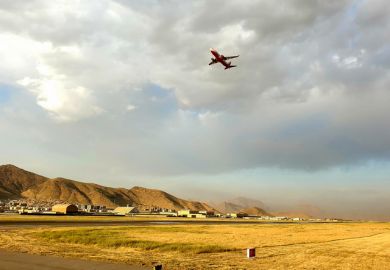Science is central to our culture and difficult for non-scientists. Public understanding of science has received increasing attention since the Bodmer report of the Royal Society in 1985. There are now many organisations involved in this endeavour and it is even part of the mission statement of the research councils with the strong support of the Office of Science and Technology. There has also been a recognition that scientists and technologists need not only to be much better communicators but also to try understanding public concerns.
It is unclear how best to pursue the public understanding of science. Not least, there are many different publics that include MPs, civil servants, patients, pressure groups, children and, of course, the ordinary citizen, if such a person exists. What is it that one wants these publics to understand? And what is it that they want to know? Evidence for public interest is overwhelming, as shown by book sales and TV audiences. But these questions are unanswered. The most satisfactory approach at present is to focus on providing access to science and scientists and to encourage engagement.
One might have hoped that those who study science and its public understanding professionally could provide some helpful and much needed insights and guidance. The research reported in this book was supported by grants from the Economic and Social Research Council presumably with this end in view. The results are limited by at least two main factors. The public is viewed as relatively homogeneous and not made up of a variety of quite different groups. Also no distinction is drawn between science and technology. This is fundamental as there is an enormous difference between science as a body of reliable knowledge, and how this knowledge is applied. For example, the application of scientific knowledge to the building of a factory is out of the hands of scientists and technologists and the true power rests with those who have the money to build such a factory. One thus enters the complex area of industrial finance and governmental controls. But throughout this book no such distinction is made.
The approach adopted was to interview local people after a local environmental problem had arisen. The results are consistent and hardly surprising: the local population had great difficulty with understanding science, rarely knew where to obtain reliable information or how to interpret the information given and were in general suspicious and distrustful of experts.
The study that seems to be taken as a model is that of Brian Wynne on the Cumbrian sheep farmers and their response to the radiation danger from Chernobyl. Official advice was apparently confused, as it was based on a false scientific model of the behaviour of caesium in the soils of the upland environment.
The scientists ignored the advice of the farmers when they tried to design a field experiment, since they did not understand that sheep confined to an experimental plot would bear no relation to the relevant situation. The local people were alienated from the authorities in charge. All this is interpreted as the farmers and scientists defending their social identities. But is it much more than a typical local authority conflict? And why were there no interviews with scientists? But this omission is typical of all the studies in this book.
A similar but much better study is that of Rosemary McKechnie on local interpretations of expertise relating to ionising radiation on the Isle of Man. Again there is the alienation the locals feel in such situations and the difficulties in establishing trust. But, in contrast to Wynne, she appreciates that much of the problem is similar to that arising from the "we" and "them" feeling in so many local issues where the authority seems remote.
Mike Michael provides one of the few interesting and relevant analyses by discussing how people deal with their absence of scientific knowledge through what he calls discourses of ignorance. "Facing any programme of science knowledge dissemination is the underlying barrier presented by these discourses." The typology of these discourses of ignorance shows that they range from those that contain a protest about not having a scientific mind, and are thus being placed in a subservient position, to those that regard science as irrelevant and even something to be opposed.
Michael is aware of the near- paradox that although science is blamed for many of our environmental problems, it is only through science that we can understand and recognise these hazards, and also that it is only through science that we can find a solutions. For example, it is simple-minded to think that all pesticides and modern farming methods are bad. As The Economist (April 20) makes clear, modern farming technology may frighten many people, but life could be even more frightening without it. Even so, the simple position is taken by Stephen Yearley when he deals with the difficulties facing environmental groups.
That indeed science is something dangerous is clearly a view to which most of the authors seem sympathetic. There are several references to the need to remove science from its privileged position. The underlying assumption is that social reconstructions of science are necessary and to be encouraged and that these reconstructions have the same validity as science itself.
The discussion of the behaviour of people living near a chemical factory does raise an important issue. How can they get access to reliable information as to whether there really is a danger and how can they learn to interpret the information correctly? Even more important, whom should they trust? This is an issue that pervades all of our political life and is not unique to science.
The museum's role in understanding science and technology is taken up by Sharon Macdonald, who followed the making of a new exhibit on food technology at the Science Museum. What should the aim be? Information, understanding, fun? She suggests visitors might have found it more challenging if it had included more about the role of the food industry and a realistic representation of, say, meat stripping. An exhibit that makes the technology familiar could, in her view, act as an intellectual narcotic.
All the authors seem to be committed to a programme that "questions the limitations of scientific research, the relationship between public needs and private profit, and ultimately who should control science". This appears to be more of a political agenda. There is also the claim that "science is often seen by public groups as a resource for the powerful in society and against the everyday interests of the weak". No suggestions are offered as to what might be done. While all are consistently hostile to the "deficit" model of the public understanding of science, there is nothing to suggest that any of the authors themselves would not benefit from a better understanding of science. For they provide little evidence that they understand it.
Lewis Wolpert is professor of biology as applied to medicine, University College London.
Misunderstanding Science? The Public Reconstruction of Science and Technology
Editor - A. Irwin and B. Wynne
ISBN - 052143268
Publisher - Cambridge University Press
Price - £35.00
Pages - 232
Register to continue
Why register?
- Registration is free and only takes a moment
- Once registered, you can read 3 articles a month
- Sign up for our newsletter
Subscribe
Or subscribe for unlimited access to:
- Unlimited access to news, views, insights & reviews
- Digital editions
- Digital access to THE’s university and college rankings analysis
Already registered or a current subscriber?



